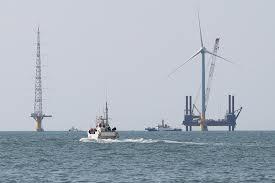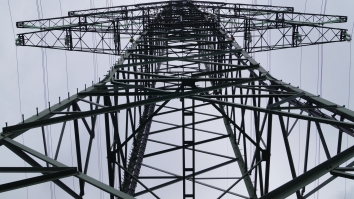
Japan takes aim at offshore wind power
An advancement in offshore wind power.
This is what Japan's new wind turbine represent.
Japan's place in the global offshore wind power market is still minimal, with a mere 1 percent of the world's total capacity.
As a first step, Japan's New Energy and Industrial Technology Development Organization finished building the giant 2.4-megawatt wind turbine about 3 km off the coast of Choshi on Oct. 14.
The foundation is embedded in the seafloor 11.9 meters below the surface. NEDO and Tokyo Electric Power Co. will conduct tests for two years to see how the local weather conditions affect power output.
They will also try to find out whether the power plant can survive typhoons and other violent weather, not to mention saltwater corrosion.
Experts, such as Shinichiro Takiguchi, an executive senior researcher at Japan Research Institute Ltd.,
say offshore wind farms are the best bet because seas surrounding Japan offer many more options than land.
Sadao Wasaka, the executive director of NEDO, said Japan's potential offshore wind power is estimated at 1.5 billion kw, against 300 million kw for land-based wind farms.
But he acknowledged that offshore wind turbines are two times costlier than land-based units.
The biggest contributing reason for the higher cost is that they require underwater cables to link with existing power grids on land.
Takiguchi added that it will take longer to develop wind power than solar energy mainly due to the costs.
Furthermore, there are often no power grids at places that are suited to build wind turbines.
The costs are even higher for floating wind turbines, which are still in the test stage in Japan, because they need longer undersea cables. Seafloor-embedded windmill posts can extend from the bottom up to about 50 meters to the surface and farther to accommodate the propellors, but suitable offshore shallows are limited.
The construction cost for the Chosi wind turbine alone was ¥3.5 billion, but just 1 km of underwater cable runs ¥100 million, NEDO officials said.
Despite the expense, however, floating windmills have superior potential and the focus in Japan will eventually shift from fixed-bottom turbines, the officials said.
To develop a full system, the central and regional governments will have to build more power grids that can reach future large-scale offshore wind farms or a group of wind power operators will need to share the financial burden to construct this infrastructure.
For more.























 Advertise
Advertise







